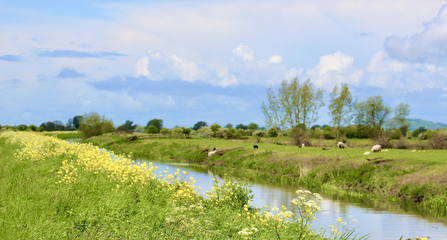Utilising our wilding approach, Somerset Wildlife Trust will make initial management interventions then allow nature to take the lead. By doing this we hope to rewet, improve water quality, reduce carbon emissions and potentially store new carbon on site.
As part of our commitments to Wilder Carbon and to demonstrate nature’s recovery and the return of ecosystem function at Honeygar, we will record initial baseline levels of greenhouse gas (GHG) emissions of carbon dioxide (CO2) and methane (CH4). Carrying this out prior to any drainage system alterations is key.




